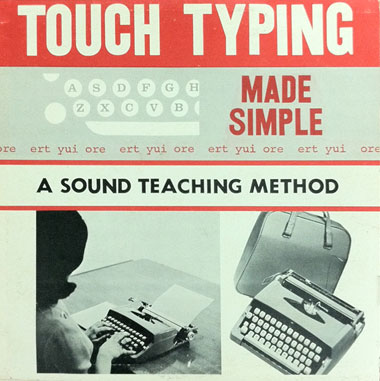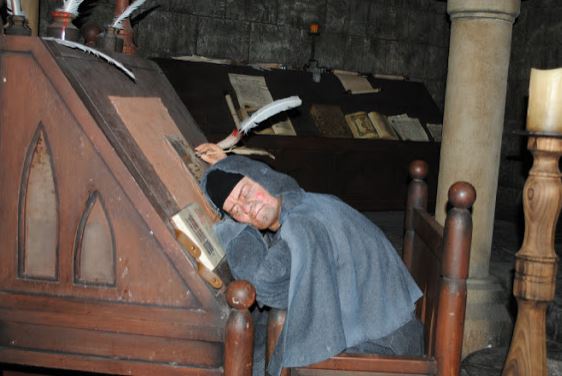 The AS9100 scheme is overseen by the International Aerospace Quality Group (IAQG) which itself is populated by a handful of rotating, seat-swapping gentleman — and an occasional lady or two — who either retired out of some other company, or who were plunked into the IAQG seats by their current employers because they weren’t otherwise productive doing anything else. Saves a ton on early retirement, I suppose; or unjust termination lawsuits.
The AS9100 scheme is overseen by the International Aerospace Quality Group (IAQG) which itself is populated by a handful of rotating, seat-swapping gentleman — and an occasional lady or two — who either retired out of some other company, or who were plunked into the IAQG seats by their current employers because they weren’t otherwise productive doing anything else. Saves a ton on early retirement, I suppose; or unjust termination lawsuits.
Anyway, this group is obsessed with their own OASIS database, which has become the main tool the IAQG uses to warehouse the data — what there is of it — supporting the AS9100 certification scheme. This includes audit reports, nonconformity resolutions and a list of accredited CBs and certified auditors, for example. OASIS is also nearly universally loathed by AS9100 registrars, since it’s buggy, inefficient, and devoid of any competent tech support. Their own people rarely know how it works; I had a conversation with the IAQG’s CFO, Alex Valderrey, and he didn’t know how record numbers were assigned in OASIS in relation to billing… and that’s part of, you know, his job.
Find Tornado. Add Sharks. Stir.
Here’s where things get sticky. As if pursuing to create a perfect storm, the IAQG has made a series of mindboggling decisions. First, they rolled out a far more complicated set of auditor rules, ignoring auditor feedback by increasing the amount of paperwork auditors have to do, forcing them to work more unpaid hours in the hotel or at home — something guaranteed to ensure less competent audits, since auditors will just rush the actual audit to leave time for all the paperwork. Next, IAQG simultaneously opted to release AS9100D a year later than ISO 9001, while deciding not to move the transition deadline, thus giving companies only two years to upgrade to an aerospace standard, while non-aerospace companies have three years to implement the far simpler “vanilla” ISO 9001 standard. One can imagine that if they were hospital administrators, they’d schedule four hours for a tonsillectomy, but only 20 minutes for open heart surgery. But the final straw is that the new rules put even more burden on auditors to do additional data entry into OASIS, as the IAQG positions itself to eventually kick the registrars out of the industry entirely, using the OASIS database’s information to help it become a sole-source certification body.
Now, most registrars are so stupid they don’t see this coming. They haven’t realized that by opting into OASIS and the IAQG’s increasingly invasive ruleset they are unwittingly helping themselves go out of business. Smithers’ Jeanette Preston is a top cheerleader for this arrangement, reportedly throwing the IAQG support during meetings of the IAAR, a US registrar group; one presumes she’s posturing for a position in the IAQG when she succeeds in destroying her own company. I dunno, or maybe she really wants to wait tables at Denny’s. Who am I to judge?
But the emphasized reliance on OASIS shows the IAQG continues to ignore the elephant in the room: the fact that AS9100 auditors are overwhelmingly very, very old. The average age of AS9100 auditors is estimated to be over 65 — that’s average, I said — with many in their late 70’s. The bulk of them are doing this only for additional, post-retirement income. This isn’t ageism, this is fact.
While the auditing profession is to be credited for being one of the last professions that respects age, this isn’t because they value it; rather, they exploit it. They simply can’t get anyone else to sign up for this job. Few little boys and girls hope to be “ISO auditors” when they grow up. The low pay, extreme travel requirements, poor vetting and illusion of authority ensure that the auditor pool is eventually populated by antisocial misfits who couldn’t find work elsewhere; they can travel because they lack families, and they are willing to do the work because it’s a step up from wiping tables at McDonald’s.
Hunt and Peckers
But with this comes another problem: the bulk of auditors are also low-tech guys (and I say “guys” intentionally, because not too many are women.) They are fat-finger typists, with poor computer skills, often carrying bulky used laptops that still run Windows XP. These are people who still use “roadrunner” or “aol” email addresses, and whose consulting websites were originally hosted by Geocities. The IAQG, meanwhile, continues to believe its own hype about the fantastic skills of its auditor pool, and continually increases the technical knowledge required for the job by making OASIS data entry more and more complicated. Sure, it offers half-hearted training on OASIS, but auditors are not paid to attend such training, so the few that go are not likely to pay much attention. IAQG just imagines that if it invents something, everyone’s an expert in it, overnight.

It’s not like IAQG isn’t hearing complaints. All over the world, auditors have been griping about OASIS, for ten years or more. It’s simply that the IAQG leadership, especially those in its Registration Management Committee (RMC), keep themselves so insulated from outside feedback or criticism, they think everything is running fine. Remember, for many of those leaders the IAQG is their last shot at greatness, so admitting any failure is akin to a condemned man accidentally ordering tofu salad for his last meal. They are the epitome of “fake it ’til you make it” dimwitted middle managers, who nevertheless imagine themselves as captains of industry.
The solution isn’t to fire the auditors for being too old; most of them deserve to be fired for other reasons, like incompetence or hate crimes. Instead, the IAQG needs to acknowledge it has an auditor problem, and then take one of two steps to fix it. First, they could make things simpler, not harder, by relying less on OASIS while at the same time making OASIS easier to work with. Alternatively, they could roll out an aggressive training program, whereby they make the training mandatory, but then pay the auditors to attend it. Neither of these is ideal, because it violates the IAQG’s key philosophy that any problem it creates immediately becomes someone else’s headache.
But failing that, the IAQG is setting itself up for a disaster when it finally does decouple from ISO, and kick ANAB and the IAF to the curb by becoming its own registrar, accreditor and latte barista. You see, it’s not only the auditors who get frustrated with OASIS, but the end users, too; they are not happy when auditors rush out of audits early so they can work on OASIS documents before their flight. They are not happy when OASIS records get screwed up and they lose their AS9100 certificate because some paperwork didn’t get reviewed prior to a 3-year certification deadline. They are not happy paying a fortune for something that, let’s face it, sucks.
NASA, Air Force and others are already frustrated — if not outright angry — that the AS9100 scheme hasn’t done much to improve reliability in the industry. The IAQG ignores them, but that can’t last forever. Eventually the Feds will get on board and heed my call to implement a 10-year moratorium on including ISO or AS certification as part of any government contract, until the bad actors get their acts together. Then there won’t be a need to even have an IAQG, since the market will have rejected them.
As always, there’s time to fix this. Will they listen?
Christopher Paris is the founder and VP Operations of Oxebridge. He has over 35 years’ experience implementing ISO 9001 and AS9100 systems, and helps establish certification and accreditation bodies with the ISO 17000 series. He is a vocal advocate for the development and use of standards from the point of view of actual users. He is the writer and artist of THE AUDITOR comic strip, and is currently writing the DR. CUBA pulp novel series. Visit www.drcuba.world








